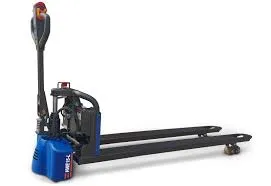


Understanding Pallet Carts A Comprehensive Overview
In today’s fast-paced logistics and warehousing environments, efficiency and convenience are paramount. Among the various tools that aid in material handling, pallet carts stand out for their versatility and effectiveness. Often used in warehouses, retail spaces, and manufacturing facilities, pallet carts are designed to transport heavy goods with minimal effort. This article delves into the features, benefits, and types of pallet carts, illustrating their importance in modern operations.
Features of Pallet Carts
Pallet carts, also known as pallet jacks or hand pallet trucks, come equipped with several features that enhance their usability. Typically, these carts consist of a robust frame, two forks designed to slide under pallets, and a hydraulic system that allows the operator to lift and lower loads effortlessly. Most pallet carts feature a user-friendly handle that can be pushed or pulled, aiding in maneuverability.
The structure of a pallet cart is often made from sturdy materials such as steel, ensuring durability and robustness even when transporting substantial loads. Additionally, many models come with swivel wheels, which enable smooth navigation through tight spaces, making them ideal for crowded warehouses or retail environments.
Benefits of Using Pallet Carts
The advantages of employing pallet carts in material handling are abundant. Firstly, they significantly reduce the physical strain on workers. Lifting heavy items manually can lead to injuries and decreased productivity; however, with a pallet cart, workers can transport items safely, minimizing the risk of accidents. This ergonomic design is particularly beneficial in environments where repetitive lifting is common.

Secondly, pallet carts enhance operational efficiency. They can allow workers to move large quantities of goods in a shorter period compared to manual methods. This time-saving aspect is essential for businesses aiming to streamline their processes and improve productivity. Moreover, a well-organized warehouse with the right material handling equipment, including pallet carts, can lead to better inventory management and quicker order fulfillment.
Types of Pallet Carts
There are various types of pallet carts to suit different needs within a workplace. The standard manual pallet jack is the most common type, suitable for various applications and load capacities. Electric pallet jacks are an advanced alternative, equipped with motors that facilitate lifting and moving heavy loads with minimal manual effort. These electric models are especially useful in environments where workers must move substantial items frequently.
Specialized pallet carts exist as well, designed for niche applications. For instance, stackable pallet carts allow for the vertical stacking of goods, maximizing storage space in warehouses. Refrigerated pallet carts are equipped to transport perishable items while maintaining temperature control, essential for foodservice and pharmaceutical industries.
Conclusion
In conclusion, pallet carts are an indispensable asset in the fields of logistics and material handling. Their robust design, coupled with the benefits they offer in terms of safety and efficiency, makes them a staple in many workplaces. With various types available, businesses can opt for models that suit their specific operational needs. As industries continue to evolve, the relevance of pallet carts remains steadfast, embodying the principles of innovation and efficiency in material handling processes. Investing in high-quality pallet carts can ultimately translate to significant cost savings, improved worker safety, and a more streamlined operation, all contributing to the success of any business in the modern marketplace.



